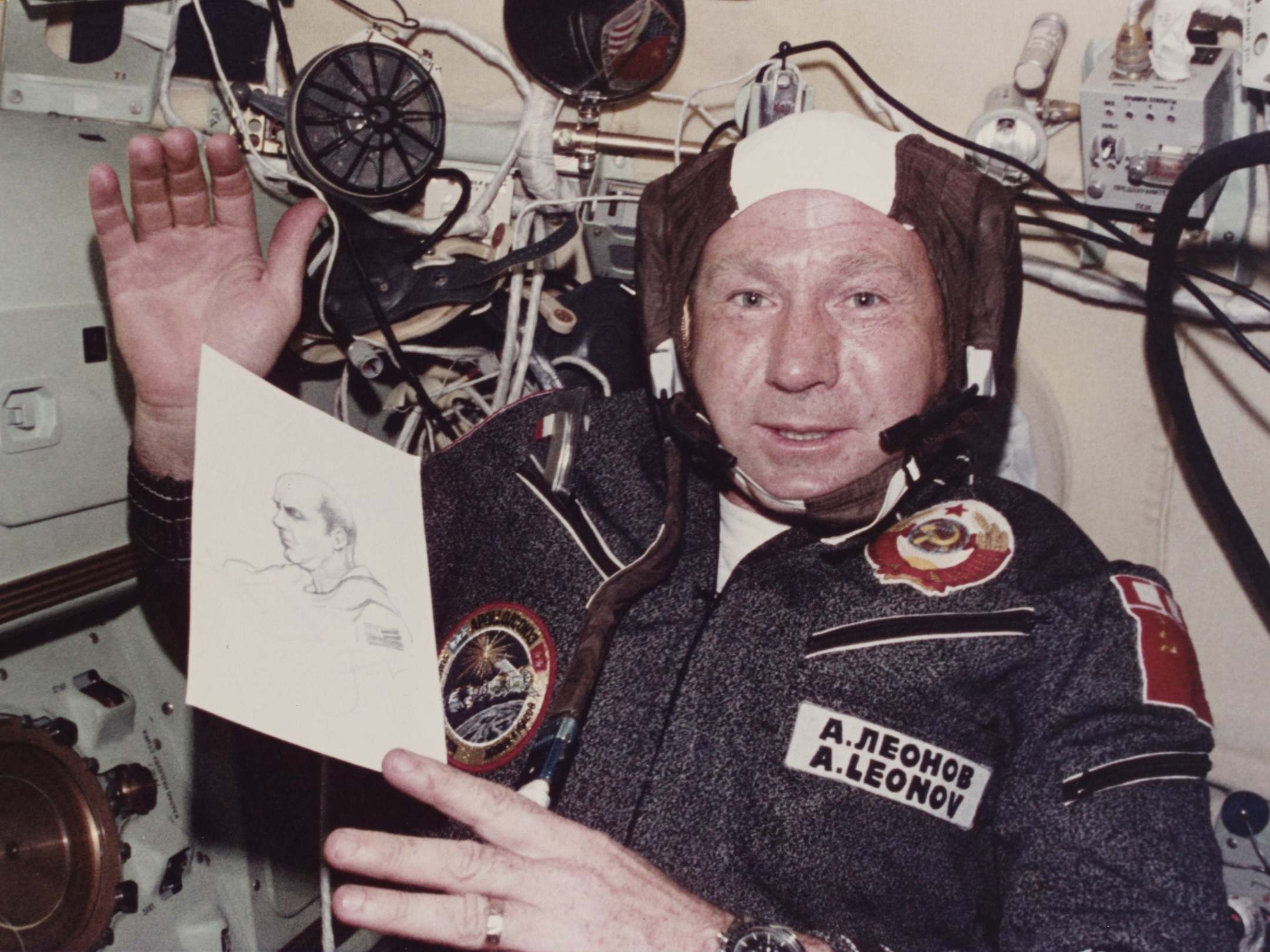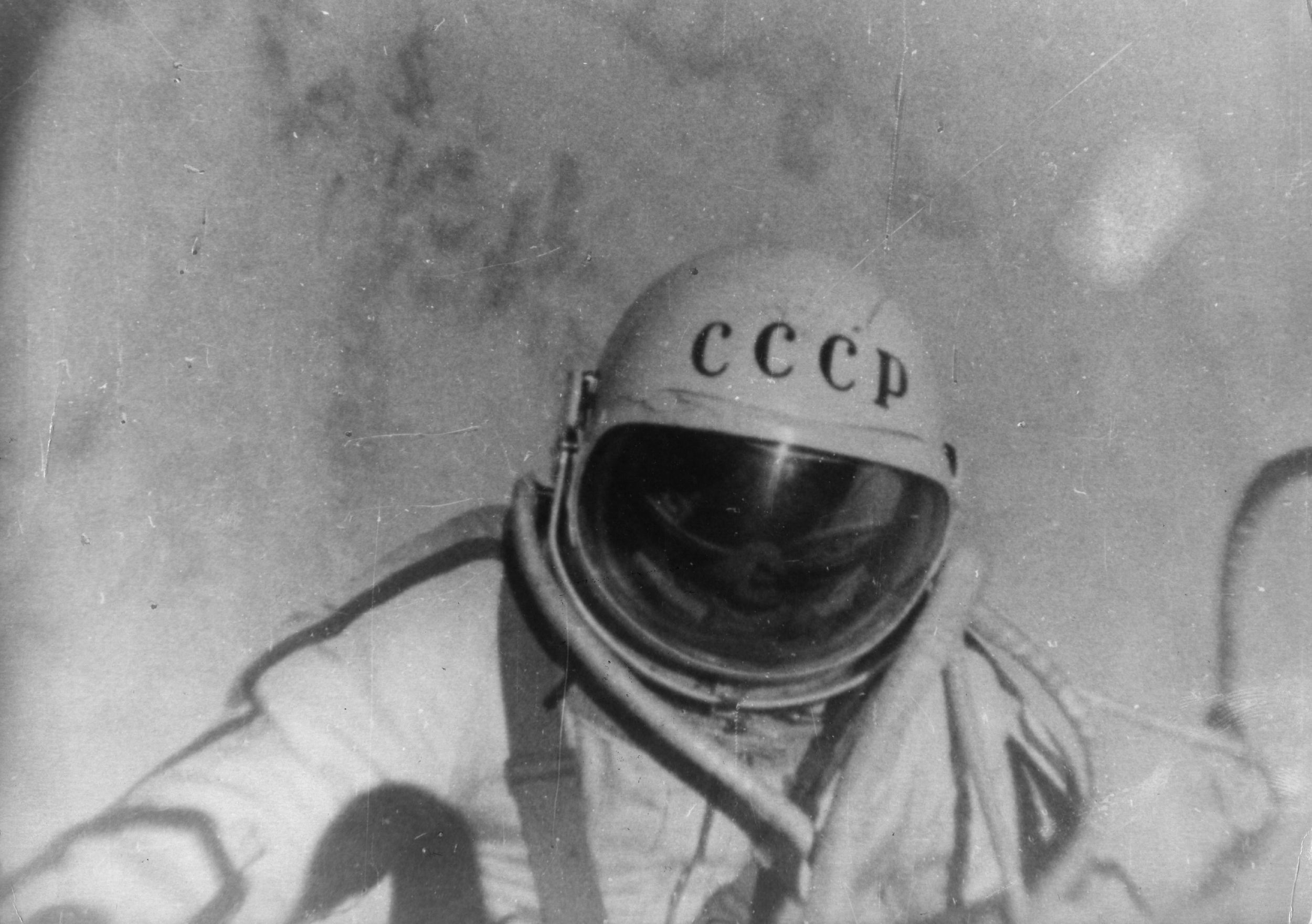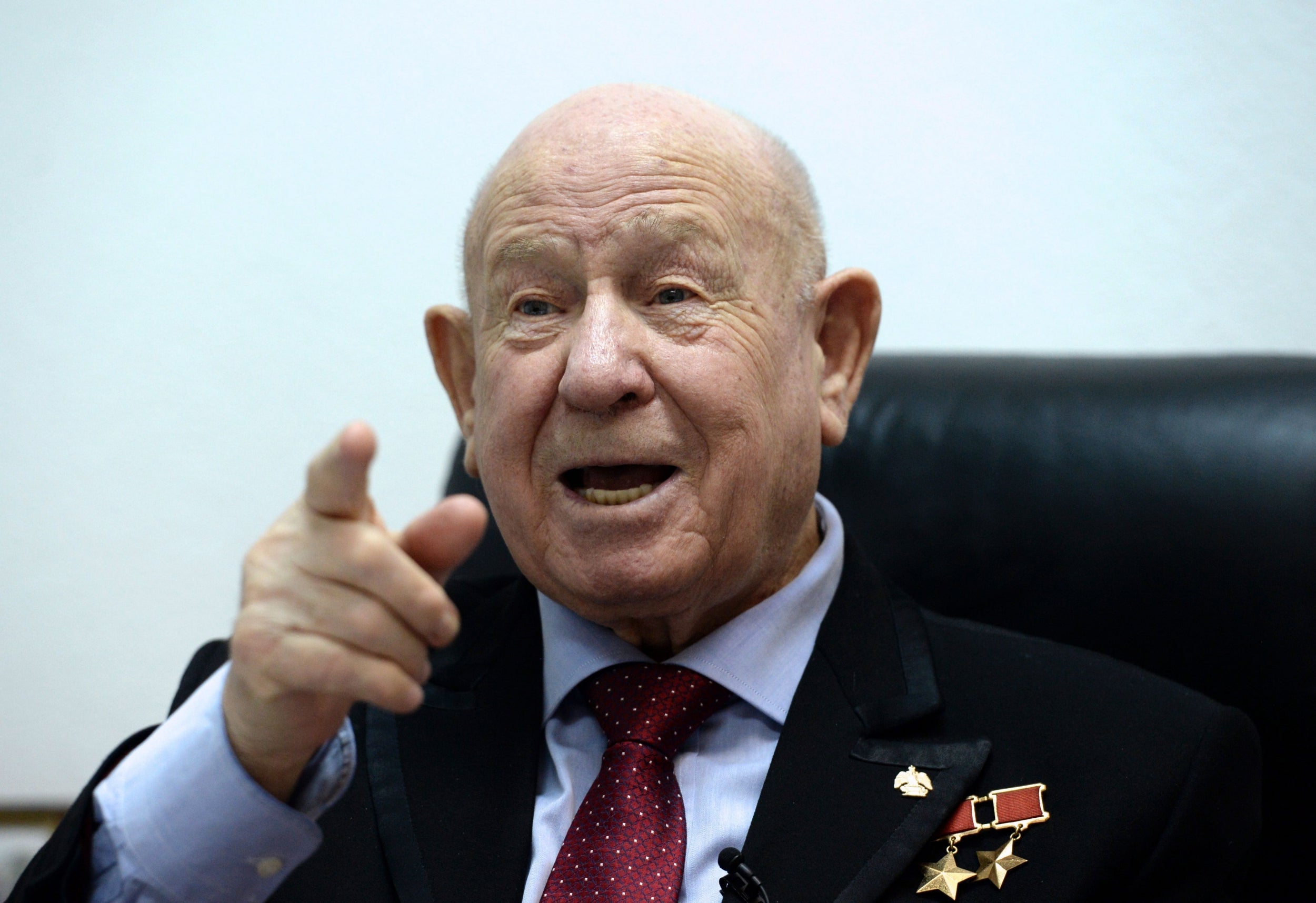Alexei Leonov: Cosmonaut who made the first space walk
His 1965 feat was a landmark in the history of the space race but he missed out on becoming the first person on the moon

Your support helps us to tell the story
From reproductive rights to climate change to Big Tech, The Independent is on the ground when the story is developing. Whether it's investigating the financials of Elon Musk's pro-Trump PAC or producing our latest documentary, 'The A Word', which shines a light on the American women fighting for reproductive rights, we know how important it is to parse out the facts from the messaging.
At such a critical moment in US history, we need reporters on the ground. Your donation allows us to keep sending journalists to speak to both sides of the story.
The Independent is trusted by Americans across the entire political spectrum. And unlike many other quality news outlets, we choose not to lock Americans out of our reporting and analysis with paywalls. We believe quality journalism should be available to everyone, paid for by those who can afford it.
Your support makes all the difference.Alexei Leonov was a Soviet cosmonaut who in 1965 became the first person to walk in space and who was scheduled to walk on the moon before the Soviet Union abandoned its efforts for a piloted lunar landing.
Leonov, who has died aged 85, was a Soviet air force officer when he was chosen in 1959 as part of his country’s inaugural class of cosmonauts. At the time, the Soviets were leading the space race, a symbolic and strategic battle for technological superiority during the Cold War.
In 1957 the Soviet Union launched Sputnik, the first satellite to orbit the earth. In April 1961, cosmonaut Yuri Gagarin – a close friend of Leonov’s – became the first person launched into space. As the US space programme tried to catch up, with flights by Alan Shepard Jr and John Glenn, the Soviets sought new ways to maintain their early edge. Leonov began training for his spacewalk in 1963.
He underwent a rigorous programme of swimming and running and was subjected to long periods of weightlessness. A special suit and helmet were made to withstand the extreme conditions in space. As perilous as early space travel was, it seemed doubly dangerous for a human being to “walk” – or, more precisely, to float – outside the safety of the capsule. On 18 March 1965, Leonov took that step.
He left the capsule through a hatch, leaving a fellow cosmonaut, Pavel Belyayev, to pilot the ship. Leonov entered an airtight chamber called an air lock and inhaled pure oxygen for almost an hour to reduce the level of nitrogen in his blood, as a means of preventing decompression sickness, or the bends. Finally, he opened the outer hatch and entered space, more than 100 miles above the earth’s surface, connected to his capsule by a 16ft-long tether. A skilled amateur painter, Leonov found the vista “indescribably beautiful”. “I said to myself: It’s true, the Earth is round,” he later said.
When he attempted to re-enter the air lock leading to the space capsule, Leonov could not climb through the hatch. His spacesuit had expanded and become almost rigid. He decided that his only option was to open a valve to release air from inside his spacesuit. It deflated enough to allow Leonov to enter the capsule’s air lock headfirst, but the change in pressure left him at risk of decompression sickness. His spacewalk lasted only 12 minutes, but his body temperature had risen so much that sweat was sloshing in the leggings of his spacesuit.
It would be decades before the dangers he encountered were fully known. Leonov also revealed, years later, that he had a suicide pill in his helmet, in case he could not return to the spacecraft.
Once he was back inside the capsule, it began to roll uncontrollably. Oxygen levels in the cabin became dangerously high, but eventually the cosmonauts were able to stabilise the craft for its return to Earth. When the automated re-entry system failed, Leonov and Belyayev flew their craft manually, tumbling wildly until its parachutes opened. They came to rest in a dense forest in the Ural mountains, about 1,000 miles from their intended landing spot. Surrounded by several feet of snow, the two cosmonauts stayed in the capsule as temperatures fell below zero. It took more than two days before they were rescued by helicopter.

His feat made Leonov a national hero, and he was expected to be the first person from his country to walk on the moon. Before the United States could do so, Soviet spaceships circled the moon and landed on its surface. But other test flights failed, and the booster rocket designed to propel the Soviets’ lunar mission exploded on the launchpad. The space race was won by the United States, culminating in the Apollo 11 mission, which touched down on 20 July 1969.
Alexei Arkhipovich Leonov was born in 1934, in the Siberian village of Listvyanka. His father, a onetime coal miner and farmer, spent time in a Soviet gulag for dissent. Young Alexei was transfixed by aviation from an early age and also studied art. He entered the Soviet air force in 1953 and trained as a fighter pilot and parachutist.
In 1975, Leonov returned to space as part of the first joint US-Soviet space effort. His capsule docked with an Apollo spacecraft under the command of Nasa astronaut Thomas Stafford. They shook hands through a connecting portal and became close friends.
Leonov became director of the Soviet cosmonaut corps and retired in 1992. He later worked in banking and exhibited his paintings worldwide, including at the National Air and Space Museum in Washington.
Fluent in English and fond of jokes, he was a popular speaker at gatherings of space aficionados. Author Arthur C Clarke named a spacecraft after Leonov in his 1982 novel 2010, a sequel to 2001: A Space Odyssey.

Leonov came to regret the secrecy and suspicion surrounding the Cold War competition in space. “If we could have gotten together earlier,” he said in 1990, “we would already have built an international observatory on the moon and we would be flying to Mars right now.”
He is survived by his wife, Svetlana, and two children.
Alexei Leonov, cosmonaut, born 30 May 1934, died 11 October 2019
© Washington Post
Join our commenting forum
Join thought-provoking conversations, follow other Independent readers and see their replies
Comments